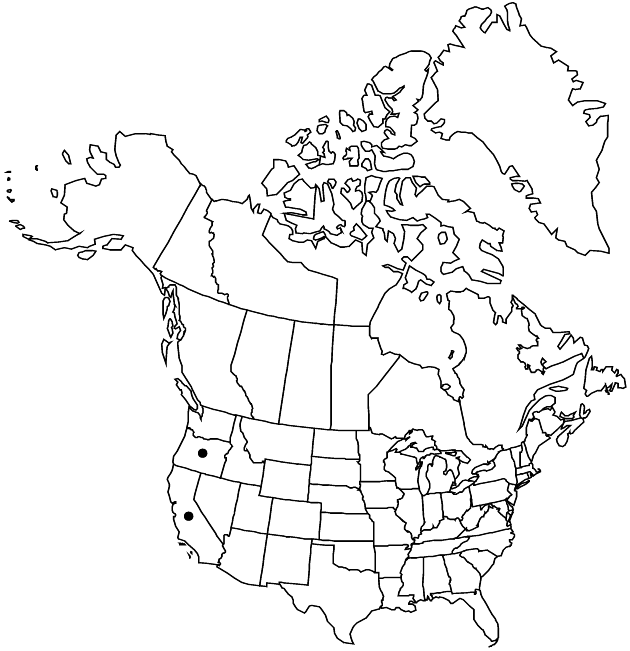Difference between revisions of "Hemizonia congesta"
in A. P. de Candolle and A. L. P. P. de Candolle, Prodr. 5: 692. 1836.
IllustratedEndemic
FNA>Volume Importer |
imported>Volume Importer |
||
| Line 6: | Line 6: | ||
|place=5: 692. 1836 | |place=5: 692. 1836 | ||
|year=1836 | |year=1836 | ||
| + | }} | ||
| + | |special_status={{Treatment/ID/Special_status | ||
| + | |code=F | ||
| + | |label=Illustrated | ||
| + | }}{{Treatment/ID/Special_status | ||
| + | |code=E | ||
| + | |label=Endemic | ||
}} | }} | ||
|basionyms= | |basionyms= | ||
| Line 19: | Line 26: | ||
-->{{Treatment/Body | -->{{Treatment/Body | ||
| − | |distribution= | + | |distribution=Calif.;Oreg. |
|discussion=<p>Subspecies 6 (6 in the flora).</p> | |discussion=<p>Subspecies 6 (6 in the flora).</p> | ||
|tables= | |tables= | ||
| Line 81: | Line 88: | ||
|basionyms= | |basionyms= | ||
|family=Asteraceae | |family=Asteraceae | ||
| − | |distribution= | + | |distribution=Calif.;Oreg. |
|reference=None | |reference=None | ||
|publication title=in A. P. de Candolle and A. L. P. P. de Candolle, Prodr. | |publication title=in A. P. de Candolle and A. L. P. P. de Candolle, Prodr. | ||
|publication year=1836 | |publication year=1836 | ||
| − | |special status= | + | |special status=Illustrated;Endemic |
| − | |source xml=https:// | + | |source xml=https://bibilujan@bitbucket.org/aafc-mbb/fna-data-curation.git/src/bb6b7e3a7de7d3b7888a1ad48c7fd8f5c722d8d6/coarse_grained_fna_xml/V19-20-21/V21_714.xml |
|tribe=Asteraceae tribe Heliantheae | |tribe=Asteraceae tribe Heliantheae | ||
|subtribe=Asteraceae (tribe Heliantheae) subtribe Madiinae | |subtribe=Asteraceae (tribe Heliantheae) subtribe Madiinae | ||
Revision as of 22:02, 27 May 2020
Leaf blades 50–175+ × 2–8(–12+) mm. Involucres hemispheric to ± urceolate or globose, 3.5–12 × 3–8+ mm. Ray laminae 5–12 mm. Disc corollas 2.5–3.5 mm. Cypselae black, 2–3.5 mm.
Distribution

Calif., Oreg.
Discussion
Subspecies 6 (6 in the flora).
Selected References
None.
Lower Taxa
Key
| 1 | Heads in spiciform-racemiform to spiciform-paniculiform arrays (heads ± sessile); ray laminae white, abaxially purple-veined | > 2 |
| 1 | Heads in racemiform or paniculiform arrays or in glomerules; ray laminae white or yellow, abaxially purple-veined or not | > 3 |
| 2 | Peduncular bracts not or barely surpassing phyllaries; calyculi 0; phyllaries 3–7 mm, apices usually shorter than bodies; cypsela widths 0.6–0.75 times lengths | Hemizonia congesta subsp. clevelandii |
| 2 | Peduncular bracts (and calyculi) often notably surpassing phyllaries; calyculi usually of 5–7, sometimes 0, bractlets; phyllaries 6–12 mm, apices usually longer than bodies; cypsela widths 0.5–0.6 times lengths | Hemizonia congesta subsp. calyculata |
| 3 | Leaves usually puberulent and eglandular throughout, rarely the distal villous and glandular; heads in paniculiform arrays; ray laminae white, not purple-veined | Hemizonia congesta subsp. tracyi |
| 3 | Leaves pubescent, sericeous, or villous, all or the distal glandular; heads in paniculiform arrays or in glomerules; ray laminae white or yellow, abaxially purple-veined | > 4 |
| 4 | Leaves ± villous (the distal with hairs at margins often longer); some or all heads usually in glomerules, sometimes in corymbiform or paniculiform arrays; phyllaries 6–10 mm, apices usually longer than bodies; ray laminae white | Hemizonia congesta subsp. congesta |
| 4 | Leaves pubescent, villous, or sericeous (the distal with hairs at margins not notably longer); heads in paniculiform arrays; phyllaries 3–7(–8) mm, apices usually shorter than bodies; ray laminae white or yellow | > 5 |
| 5 | Ray laminae white | Hemizonia congesta subsp. luzulifolia |
| 5 | Ray laminae yellow | Hemizonia congesta subsp. lutescens |